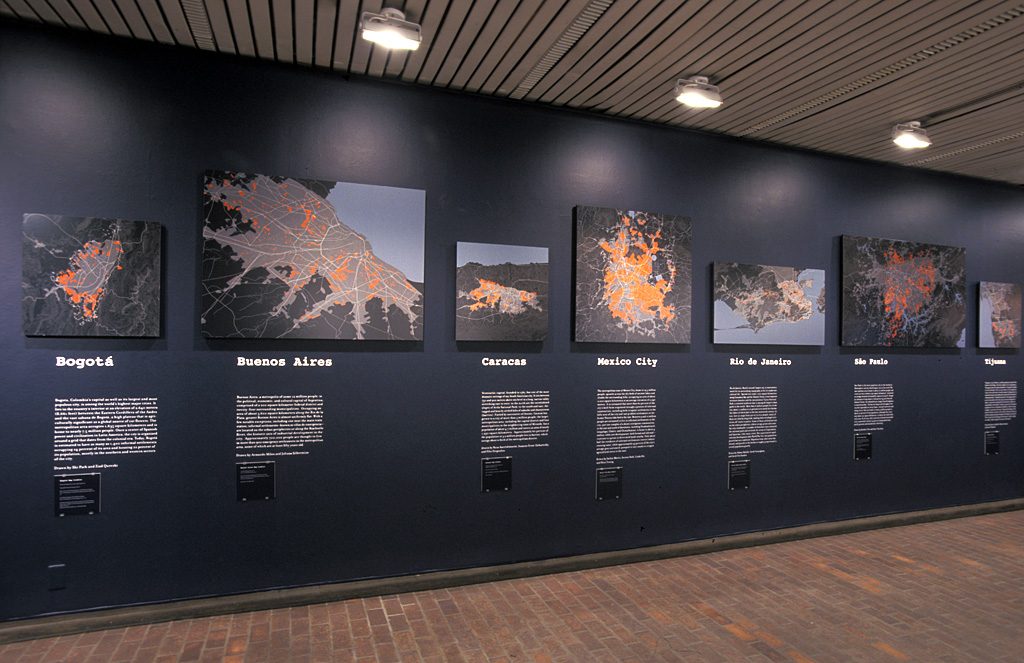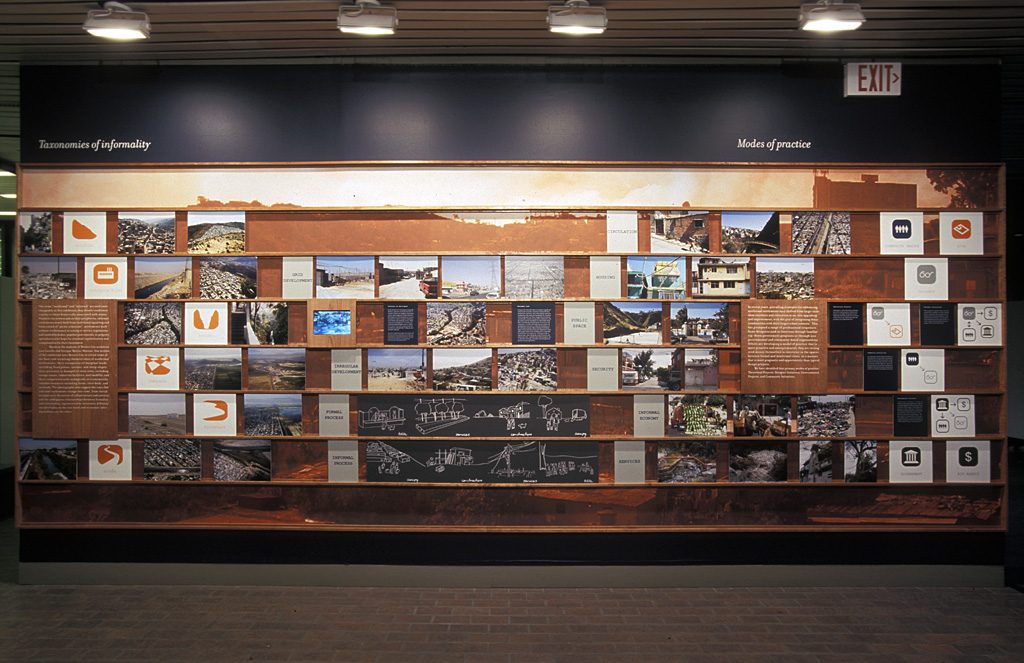Dirty Work: Transforming Landscape in the Non-Formal City of the Americas
01/28/2008–03/14/2008
John Beardsley, curator
Christian Werthmann, curator
The exhibition presented new terrain and tactics for landscape architecture. It had two subjects. One was physical: low-income communities, variously called squatter settlements, shantytowns, or slums, which are a dominant feature of the developing world’s megacities. The other was professional: the new activist and entrepreneurial practices that attempted to operate in these circumstances—among the most challenging imaginable.
The exhibition presented the various ways that contemporary designers are attempting to upgrade these settlements physically without destroying them socially, saving what they can of their physical structure while alleviating environmental and social problems ranging from inadequate public space and housing to unemployment, insecure land tenure, and unsanitary conditions. The exhibition focused on Latin America; it used landscape as the particular lens through which to examine these settlements: their occupation of marginal lands in floodplains or on steep slopes; their separation from urban landscape infrastructure, be it roads, transportation, sewers, water supply, or storm-water management; their severe environmental, public health, and security problems; and their lack of public facilities for economic, cultural, or recreational activities. Landscape is conceptualized as both the primary problem and the main opportunity for these communities.
What is “dirty” about this work? It addresses itself to massive economic, environmental, infrastructural, and social failures of recent urban policies, and it often involves the messy procedures of community design and the compromises of political action. At the same time, it is arguably complicit in neoliberal policies that favor microenterprise and market-based solutions over more ambitious, state-sponsored initiatives that might have a larger impact. Still more, it is not yet clear if upgrading can achieve significant permanent improvements or if it will merely perpetuate social and spatial inequalities, with large percentages of the population packed into disproportionately small areas and cut off from basic services. In the current economic and political climate, however, such “Dirty Work” might be a designer’s most viable mode of practice in the context of the nonformal city.
Apart from climate change, there are few greater challenges to widespread planetary health and security than the proliferation of nonformal settlements. As difficult and complex as conditions are in these communities, however, they provide clues to their own improvement: Residents of nonformal cities often display cultural adaptations and survival strategies that can guide future interventions. It is becoming the role of designers to give spatial form to the environmental, social, and economic ambitions of these communities, helping to marshal the financial investment and political will to begin their transformation. In sum, this exhibition explored the relationship between social ethics and creativity in design culture. It advances the hopeful thesis that impoverished contexts do not have to result in a poverty of imagination.
The cities featured in the exhibition were: Bogotá, Colombia; Buenos Aires, Argentina; Caracas, Venezuela; Mexico City and Tijuana, Mexico; and Rio de Janeiro and São Paolo, Brazil.
The exhibition was curated by faculty members John Beardsley and Christian Werthmann.

